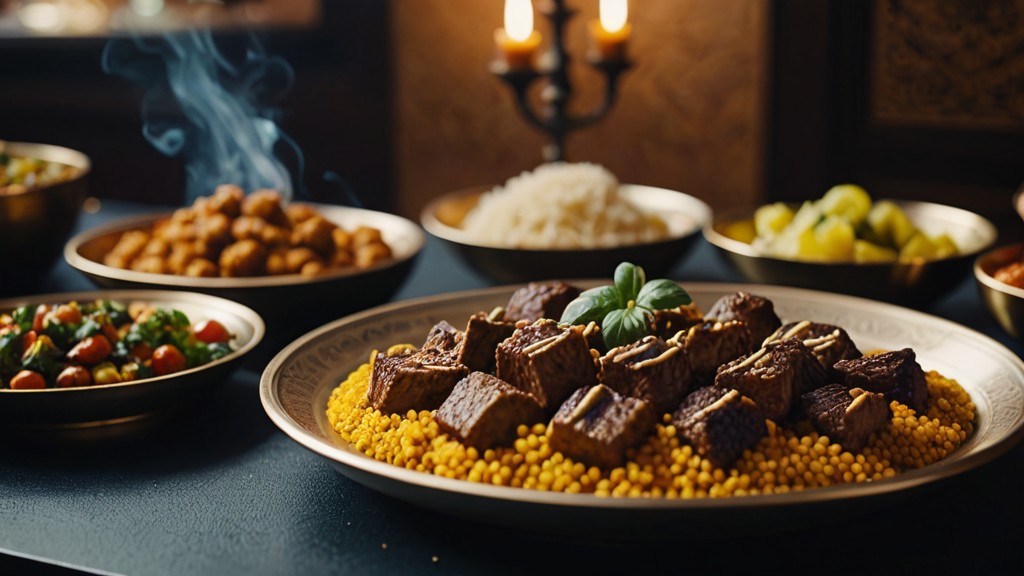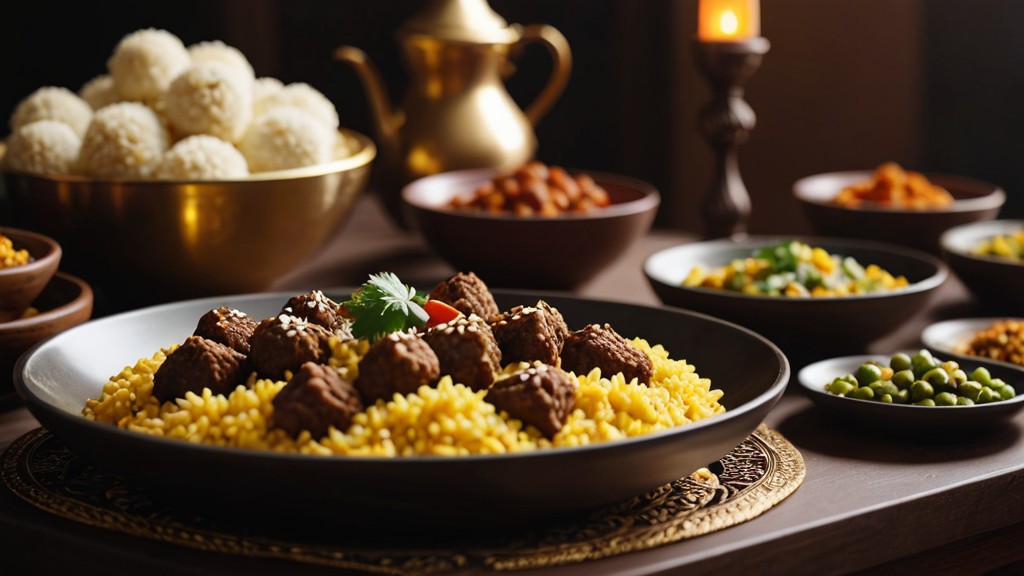Top Arabian Cuisines You Must Try
A culinary journey through Arabian countries, featuring dishes like Saudi Kabsa, Emirati Harees, and Omani Shuwa.
Top Arabian Cuisines You Must Try
Top Arabian Cuisines
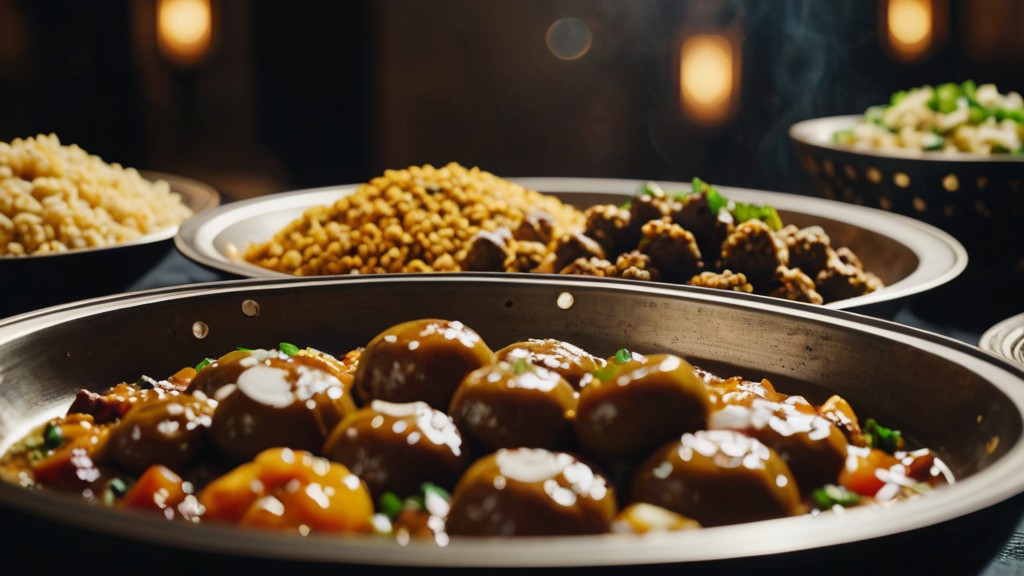
1. Saudi Kabsa
Kabsa is a quintessential Saudi dish that embodies the essence of Arabian cooking. This aromatic rice dish is often considered the national dish of Saudi Arabia. Kabsa is traditionally made with fragrant basmati rice, tender meat (usually chicken, lamb, or beef), and an array of spices such as saffron, cardamom, and black lime. Each region in Saudi Arabia has its own twist, incorporating local ingredients and spices.
The cooking method involves simmering the meat with tomatoes, onions, and spices to create a flavorful broth, which is then used to cook the rice, allowing it to absorb all the spices and flavors. Kabsa is often served on large platters, encouraging communal dining—a hallmark of Arabian culture.
For a deep dive into Kabsa recipes and variations, visit: Taste Atlas on Kabsa.
2. Emirati Harees
Harees is a traditional Emirati dish made from wheat and meat, often enjoyed during Ramadan, weddings, and special occasions. The dish requires a time-consuming preparation process that involves soaking, grinding, and cooking wheat until it reaches a smooth, porridge-like consistency.
Typically, harees is made with chicken or lamb, seasoned simply with salt, and sometimes flavored with a hint of cinnamon for warmth. The dish is cooked long enough to meld the flavors beautifully, culminating in a warm, hearty meal that is nourishing and satisfying.
To learn more about harees and other UAE culinary traditions, check out: Emirates Cuisine: Harees.
3. Omani Shuwa
Shuwa is a slow-cooked lamb dish that represents the pinnacle of Omani cuisine. Traditionally prepared during festive occasions and family gatherings, it showcases the Omani practice of cooking in an underground sand oven. The preparation begins a day in advance, marinating the lamb in a mixture of spices and herbs, then wrapping it in banana leaves.
The lamb is then buried in the sand, with a fire burning on top for 12-24 hours, allowing the meat to become incredibly tender and infused with smoky flavors. The result is a succulent, fall-off-the-bone meat dish served with fragrant rice or bread.
Top Arabian Cuisines For more on this unique dish and its cultural significance, you can explore: Taste of Oman: Shuwa.
4. Lebanese Tabbouleh
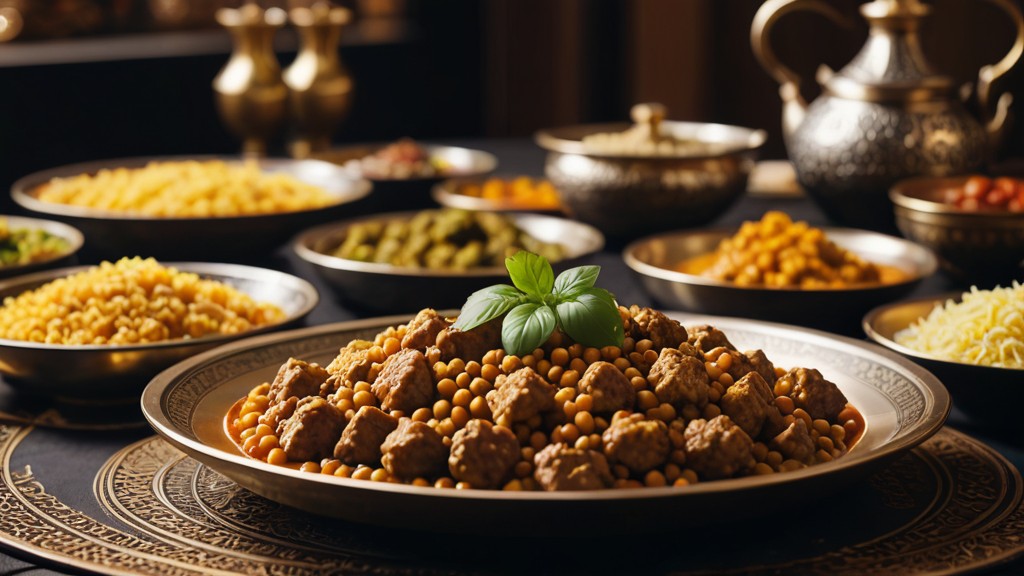
Tabbouleh is a refreshing salad that originates from Lebanon. Made primarily with finely chopped parsley, mint, tomatoes, onions, and soaked bulgur wheat, this dish is dressed with olive oil and freshly squeezed lemon juice. Tabbouleh is not only a staple in Lebanese cuisine but also a celebrated dish throughout the Middle East.
The freshness of the herbs and the vibrant flavors make it a perfect side dish, often served with other mezze platters. Tabbouleh is a testament to the Lebanese love for fresh ingredients and healthy eating. Top Arabian Cuisines
For detailed recipes and variations, explore: Lebanese Tabbouleh at BBC Good Food.
5. Jordanian Mansaf
Mansaf is the traditional dish of Jordan, recognized for its rich flavors and cultural significance. It consists of lamb cooked in a sauce made from fermented dried yogurt known as jameed, served over a bed of rice and garnished with almonds and pine nuts. Mansaf is often served on large platters, symbolizing hospitality in Jordanian culture.
This dish is typically enjoyed during celebrations and family gatherings, showcasing the communal spirit of eating. The combination of tangy jameed, tender lamb, and aromatic rice is a feast for the senses.
To better understand Mansaf and its cultural meaning, see: Taste of Jordan: Mansaf.
6. Bahraini Machboos
Machboos is a spiced rice dish from Bahrain, similar to Kabsa but with its unique twist. It incorporates basmati rice cooked with ingredients such as chicken, fish, or lamb, seasoned with spices like cumin, cardamom, and turmeric. Top Arabian Cuisines
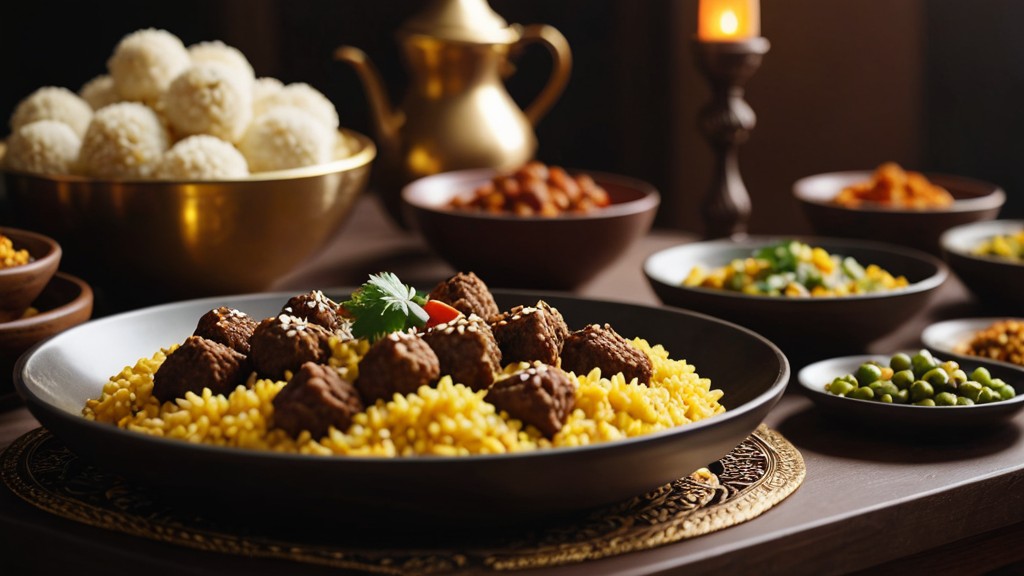
The dish is often garnished with fried onions, nuts, and raisins, adding texture and flavor. Machboos is typically served as a one-pot dish, highlighting the communal nature of Bahraini dining.
To find out more about Machboos recipes and its variations, refer to: Machboos Recipe.
7. Qatari Harees
Similar to the Emirati version, Harees in Qatar involves a hearty mix of wheat and seasoned meat cooked until reaching a creamy consistency. This dish is especially popular during Ramadan and festive events, representing both comfort and tradition in Qatari homes.
Imagine the combination of hearty grains with the richness of meat, all complemented by a sprinkle of spices—it’s a dish that warms both the body and soul.
Conclusion
Arabian cuisine is a vibrant and diverse culinary landscape, rich with history and tradition. Each dish reflects the culture of its region, creating a unique dining experience that resonates with flavors and communal identity. From the aromatic Kabsa of Saudi Arabia to the slow-cooked Shuwa of Oman, these dishes are a must-try for anyone looking to explore the culinary wonders of the Arabian Peninsula. Whether you are enjoying a plate of Harees during Ramadan or feasting on Mansaf during a family gathering, you will surely savor the warm hospitality and rich heritage embedded within Arabian cuisine.
